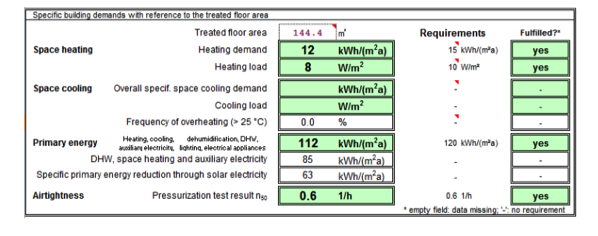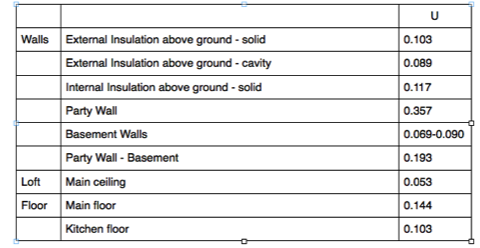There is no obvious place to start when trying to build a Passive House because every aspect of the design impacts on the whole. So how on earth do you ever achieve a final design?
The answer is fairly obvious - you need a design tool that can model all aspects of any house design and location - the PHPP software from the PassivHaus Institut.
The PHPP is an Excel spreadsheet template that you complete for your particular design on your site. The Manual supplied for the software (version 8) is 220 pages long and does a reasonable job of guiding you through the completion process.
Whilst the PHPP only needs to be completed once for site data such as height of site and weather data, other elements such as the proposed insulation of an external element are frequently changed.
Why would you make changes? The obvious one is that the Planners won’t approve the initial design. We had external insulation on all elevations and had to change to internal insulation on the front of the house. This reduces internal space - how much depends on the depth and type of internal insulation - introduces numerous extra Thermal Bridges - and results in a poorer energy performance overall. So to compensate for these adverse impacts you revisit the PHPP and try and see what is required elsewhere to compensate.
In practice such changes only take a few seconds to run through the programme. My view is that it is so much easier if the client can do the PHPP modelling because the client is the best person to make the trade-off between better performance and extra cost. This approach also reduces possible delays with suggestions made directly to the architect.
However much you model in the PHPP software the builders have to respect the integrity of the build to ensure air-tightness and that the house as built is that shown on the detailed plans. During the PHPP modelling you assume that the final test will meet the 0.6 air changes per hour limit for a Passive House but until the final air test is undertaken you have no idea what this figure will be!
The PHPP Design Stage Approval certificate is shown below.
The answer is fairly obvious - you need a design tool that can model all aspects of any house design and location - the PHPP software from the PassivHaus Institut.
The PHPP is an Excel spreadsheet template that you complete for your particular design on your site. The Manual supplied for the software (version 8) is 220 pages long and does a reasonable job of guiding you through the completion process.
Whilst the PHPP only needs to be completed once for site data such as height of site and weather data, other elements such as the proposed insulation of an external element are frequently changed.
Why would you make changes? The obvious one is that the Planners won’t approve the initial design. We had external insulation on all elevations and had to change to internal insulation on the front of the house. This reduces internal space - how much depends on the depth and type of internal insulation - introduces numerous extra Thermal Bridges - and results in a poorer energy performance overall. So to compensate for these adverse impacts you revisit the PHPP and try and see what is required elsewhere to compensate.
In practice such changes only take a few seconds to run through the programme. My view is that it is so much easier if the client can do the PHPP modelling because the client is the best person to make the trade-off between better performance and extra cost. This approach also reduces possible delays with suggestions made directly to the architect.
However much you model in the PHPP software the builders have to respect the integrity of the build to ensure air-tightness and that the house as built is that shown on the detailed plans. During the PHPP modelling you assume that the final test will meet the 0.6 air changes per hour limit for a Passive House but until the final air test is undertaken you have no idea what this figure will be!
The PHPP Design Stage Approval certificate is shown below.

The U values we used to reach the figures are:
